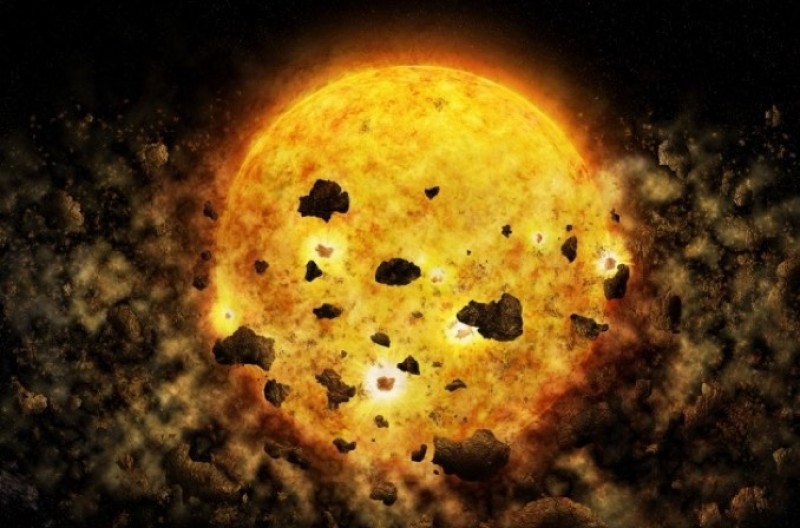
The Chandra X-ray Observatory, studying high-energy radiation from a star that periodically dims and brightens, has found evidence suggesting the catastrophic collision of two infant planets, producing a huge cloud of debris, including significant amounts of iron, that would explain the star’s most recent change in intensity.
The star, known as RW Aur A, is located in the Taurus-Auriga constellation some 450 light years from Earth where thousands of young stars blaze in stellar nurseries. RW Aur A fades every few decades and then brightens again, prompting speculation about the effects of dusty clouds of debris orbiting the star, or other, unknown processes going on closer in.
But astronomers using the Chandra X-Ray Observatory to study RW Aur A’s most recent dimming obtained spectra showing significant amounts of iron in the star’s light, indicating the possible collision of two young planets.
“Computer simulations have long predicted that planets can fall into a young star, but we have never before observed that,” said Hans Moritz Guenther, a research scientist in MIT’s Kavli Institute for Astrophysics and Space Research, who led the study. “If our interpretation of the data is correct, this would be the first time that we directly observe a young star devouring a planet or planets.”
The star’s previous dimming events may have been caused by similar collisions of planet-size bodies or large remnants produced in previous collisions.
“It’s speculation, but if you have one collision of two pieces, it’s likely that afterward they may be on some rogue orbits, which increases the probability that they will hit something else again,” Guenther says.
Astronomers have noted RW Aur A’s changes in brightness since 1937. Dimming events typically last about a month, although they have lasted longer in recent years. RW Aur A dimmed again in January 2017 and this time around, Guenther’s team studied the event with Chandra.
“The X-rays come from the star, and the spectrum of the X-rays changes as the rays move through the gas in the disk,” Guenther says. “We’re looking for certain signatures in the X-rays that the gas leaves in the X-ray spectrum.”
Chandra recorded nearly 14 hours of X-ray data. The data indicated the star is much hotter than expected and features a large amount of debris in a surrounding disk. It also revealed an unusual amount of iron in the disk.
“Here, we see a lot more iron, at least a factor of 10 times more than before, which is very unusual, because typically stars that are active and hot have less iron than others, whereas this one has more,” Guenther says. “Where does all this iron come from?”
There are at least two possibilities. One is a phenomenon known as a dust pressure trap, in which small particles can become trapped in so-called “dead zones” in a planetary disk and then released later due to gravitational interactions, falling into the star and releasing the radiation seen by Chandra.
The other theory, the one favoured by Guenther’s team, is that two planetesimals collided. If one or both of those doomed worlds were made partly of iron, the collision could release large amounts of iron-rich debris that could obscure the RW Aur A’s light as it plunged into the star.
“There are many processes that happen in young stars, but these two scenarios could possibly make something that looks like what we observed,” Guenther says.